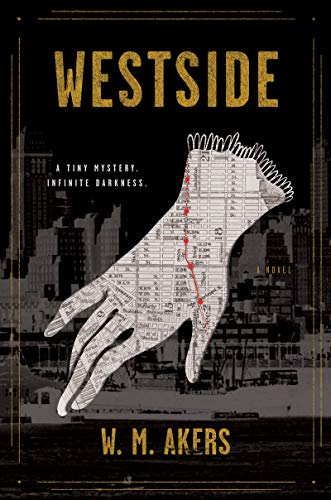Westside
Akers imagines a fence thirteen miles long dividing the Manhattan of 1921 into two parts: eastside and westside. The eastside appears to be all that is good, comparatively affluent and law-abiding. Across the huge fence the westside is not even marginally respectable; it is home to assorted losers of society, a place where life is cheap, and death and disappearance are more or less synonymous.
Gilda Carr inhabits this dystopian world and can function on either side of the fence. She seems content with her life and the dystopia, even as it invades her own living arrangements. The daughter of Virgil Carr, a cop who she knew as gentle but who apparently was a gang leader and a killer, Gilda is struggling to find the truth about him.
Calling herself an investigator of tiny mysteries, Gilda is hired to find a lost glove for wealthy Mrs. Copeland. This mystery leads her to witness the killing of Mr. Copeland and, later, to discovering more about her dead father.
This novel takes the inequalities of Prohibition-era New York and envisions a fence down the centre of Manhattan. This emphasizes the dichotomy between the two sides as it protects the haves from the have-nots. This added level of heavily-guarded detachment ramps up the dysfunction that encompasses not just the external world but also the characters within it.
It is not a comfortable read, but in Westside the author highlights much of the hypocrisy of the time and place, a fable perhaps with a message for our own time.










